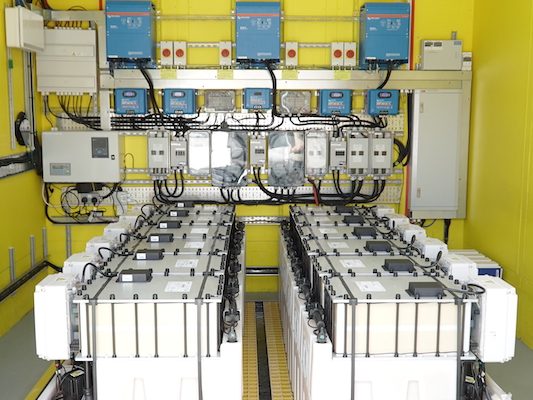When we talk about a future where renewable energies take care of 100% of our electricity needs, many questions arise regarding the regulation of its flashing. Something that will lead to a maximization of the electrical system that will have a high economic cost on the use of storage systems for the most part with a very high price. But on the market, there are already functional solutions that can help facilitate this transformation of the sector—flow batteries.
The Australian company Redflow has been working with this technology for a few years, using a solution of zinc bromide (ZnBr2) that is stored in two tanks. One tank stores the positive electrolyte and the other the negative. It is a reversible reaction that generates electricity when it occurs and can return to its origin by providing it.
Among the benefits of this technology is its long lifespan. According to their developers, they can support more than ten years of use without noticing the loss of performance in loading and unloading processes that can reach 100%. A figure that we can compare with 60% of lead batteries or 80-90% of lithium batteries.
They can also work in extreme heat conditions, up to 50 degrees Celsius, and safely due to the physical separation of its components and the retardant liquid from which they are formed. Factors to which are added its ease to be recycled once its useful life has ended since its body is made of plastic, aluminum, and steel, while the electrolyte can be removed and cleaned and used in a new battery.
There are many applications where this type of battery is being selected—mainly isolated installations. For example, repeater antennas for television or telephone signals, which need a reliable and minimal maintenance backup system, which also adds the factor of little interest to thieves looking for lead or lithium batteries for resale.
But this technology has a wide variety of applications. As an example, one of the latest installations carried out at the University of Swansea, which has ordered a 120 kWh system of these flow batteries. These will work together with an installation of photovoltaic panels. They will be in charge of the aerothermal heat pump system that serves the facilities.
A system that can be scaled according to the needs of the client, and which shows us that mitigating the intermittencies of an electricity network based on renewable energies is technically possible. However, it will involve making significant investments in both maximizing the network and drawing a capillary system with large and small-scale storage with these inexpensive batteries, which you have already seen startup 800 MWh installations in some markets.

